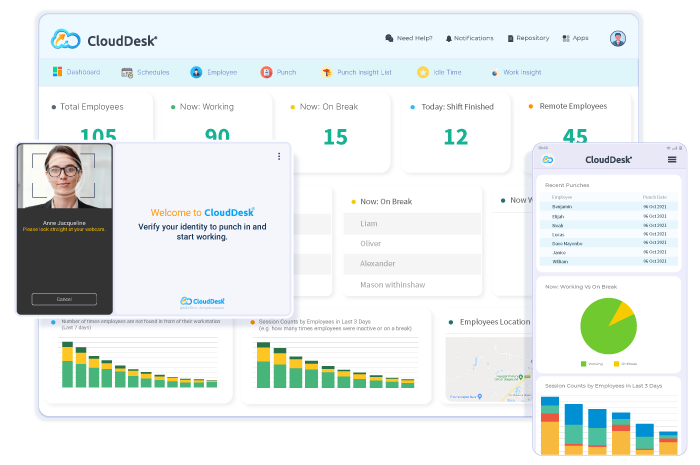The Importance of Tracking Active Directory Changes
In today’s digital landscape, where cyber threats loom large, maintaining the security and integrity of your organisation’s IT infrastructure is paramount. Active Directory, as a central component of many networks, plays a crucial role in managing user accounts, permissions, and access to resources. Any unauthorized or malicious changes to Active Directory settings can have serious repercussions, including data breaches, service disruptions, and compliance violations.
Why Track Active Directory Changes?
Tracking changes in Active Directory is essential for several reasons:
- Security: By monitoring changes to user accounts, group memberships, and permissions, you can quickly detect suspicious activities that may indicate a security breach.
- Compliance: Many regulatory standards require organisations to maintain detailed records of changes made to their IT systems. Tracking Active Directory changes helps demonstrate compliance with these requirements.
- Auditing: Regularly auditing Active Directory changes allows you to review who made specific modifications and when they occurred. This information is invaluable for troubleshooting issues and conducting forensic investigations.
- Prevention: Proactively tracking changes helps prevent accidental misconfigurations or malicious actions that could compromise the stability and security of your network.
How to Track Active Directory Changes
There are various tools and methods available to track changes in Active Directory:
- Audit Logs: Enable auditing on your domain controllers to log events related to user authentication, object access, policy changes, and more. Reviewing these logs can provide valuable insights into who is making changes in your Active Directory environment.
- Third-Party Solutions: Consider using specialised software designed for monitoring and auditing Active Directory changes. These tools offer advanced features such as real-time alerts, detailed reports, and historical analysis of modifications.
- User Training: Educate your IT staff on best practices for managing Active Directory to minimise the risk of inadvertent errors or security incidents. Promote a culture of accountability and responsibility when making changes to critical system settings.
The Bottom Line
Tracking changes in Active Directory is not just a good practice – it’s a necessity in today’s cybersecurity landscape. By implementing robust monitoring mechanisms and staying vigilant against potential threats, you can safeguard your organisation’s sensitive data and maintain the trust of your stakeholders.
Top 5 Tips for Monitoring and Securing Active Directory Changes
- Enable auditing of Active Directory changes to track modifications.
- Regularly review audit logs to monitor any suspicious activities.
- Implement role-based access control to restrict permissions for making changes.
- Use automated tools for real-time monitoring of Active Directory changes.
- Educate staff on the importance of maintaining security and integrity of Active Directory.
Enable auditing of Active Directory changes to track modifications.
Enabling auditing of Active Directory changes is a fundamental step in effectively tracking modifications within your IT environment. By activating audit logs on your domain controllers, you can capture crucial information about user activities, policy adjustments, object access, and more. This proactive measure not only enhances your ability to monitor and investigate alterations but also strengthens your overall security posture by providing valuable insights into who is making changes and when they are occurring.
Regularly review audit logs to monitor any suspicious activities.
Regularly reviewing audit logs is a crucial tip for tracking Active Directory changes effectively. By monitoring these logs diligently, IT administrators can promptly identify any unusual or suspicious activities within the network. Detecting unauthorised modifications or access attempts early on can help mitigate security risks and prevent potential data breaches. Maintaining a proactive stance towards auditing Active Directory changes ensures that any anomalies are swiftly addressed, reinforcing the overall security posture of the organisation.
Implement role-based access control to restrict permissions for making changes.
Implementing role-based access control (RBAC) is a crucial tip for tracking Active Directory changes effectively. By assigning specific roles and permissions to users based on their responsibilities and authority levels, organisations can restrict access to critical settings and limit the potential for unauthorised modifications. RBAC enhances security by ensuring that only authorised personnel can make changes to Active Directory configurations, reducing the risk of insider threats and accidental errors. This proactive approach not only strengthens the overall security posture but also streamlines the auditing process by clearly defining who has the authority to make changes and under what circumstances.
Use automated tools for real-time monitoring of Active Directory changes.
To enhance the security and efficiency of your Active Directory environment, it is highly recommended to utilise automated tools for real-time monitoring of changes. By implementing such tools, you can promptly detect and respond to any modifications made within your Active Directory, ensuring swift identification of suspicious activities and potential security threats. Real-time monitoring not only enhances your ability to proactively safeguard your network but also provides valuable insights into user actions and system events as they occur, enabling you to maintain a vigilant stance against unauthorised access or configuration changes.
Educate staff on the importance of maintaining security and integrity of Active Directory.
It is crucial to educate staff on the significance of upholding the security and integrity of Active Directory. By raising awareness about the potential risks associated with unauthorised changes and emphasising the role each individual plays in maintaining a secure network, employees can become proactive guardians of the organisation’s IT infrastructure. Training sessions that highlight best practices, security protocols, and the impact of negligence on Active Directory can empower staff to be vigilant, responsible, and committed to upholding data confidentiality and system reliability.







